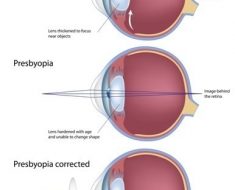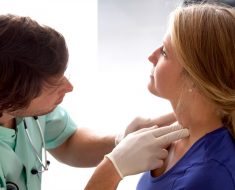Using two experimental anti-malarial vaccines, which work in different ways, can greatly reduce the number of malaria infections in animal studies.
Experimental vaccines, which independently achieve 48% and 68% reductions in malaria cases, can achieve 91% reduction when combined.
Presently, each vaccine is at a different stage of human trials, and there have not been efforts to combine them. However, a team led by Imperial College London have now tested the effectiveness when using the two types of vaccine together.
The study, published today in the journal eLife, used genetically altered mouse parasites that express proteins expressed on the human version of the malaria parasite. The research was funded by the PATH Malaria Vaccine Initiative and the Medical Research Council (MRC), including researchers at Imperial’s MRC Centre for Outbreak Analysis and Modelling.
Lead researcher Dr. Andrew Blagborough, from the Department of Life Sciences at Imperial, said: “This is the first direct evidence than combining vaccines of different types significantly improves their efficacy in terms of reducing malarial burden.
“Reaching a potential 91% reduction in cases would have a huge impact on public health because the vaccines could be effective in areas where malaria is more prevalent.”
Malaria is caused by a group of parasites that have a complex life cycle, spending time in the mosquito midgut and salivary glands, in the human liver, and circulating in human blood, where they cause the disease.
The team tested two types of vaccines: those that prevent mosquitoes from transferring the parasites, called transmission-blocking vaccines (TBVs), and those that prevent the parasite from infecting the liver, termed pre-erythrocytic vaccines (PEVs).
RTS,S is the world’s first PEV malaria vaccine that has been shown to provide partial protection against malaria in young children by blocking infection of the liver. However, its maximum efficacy is under 50% (i.e. it reduces cases by around 50%).
There are currently several types of transmission-blocking vaccines in early trials, which are thought to reduce the number of parasites in the mosquito salivary glands. Their efficacy typically ranges from around 50-95%.
It has been assumed that combining these vaccines would increase their efficacy, but it has never been tested until now. The team found that when a partially effective PEV was combined with the most effective transmission-blocking vaccine, the efficacy was around 91%.
The team also found that combining any of the two types of vaccines improved efficacy of the mixture more than might be expected from the single efficacy of each vaccine separately.
Dr. Morven Roberts, Programme Manager for parasites and neglected tropical diseases at the MRC, said: “While these findings are in the preliminary stages, they’re valuable as they shed light on optimising strategies for preventing malaria. Learning that combining vaccines can dramatically boost efficacy in mice provides another potential tactic for controlling this disease. This is timely research as global health officials work towards WHO targets to eliminate malaria by 2030.”
The team will next study how combined vaccines could work in more complex situations. Dr. Blagborough said: “In the real world, the vaccine coverage we can achieve- how many people we can give it to—is important, as are the local levels of transmission, and how prevalent malaria currently is in that area.
“We plan to use a combination of rodent experiments and computer modelling to help us estimate effectiveness requirements for future vaccines.”
Source: Read Full Article





